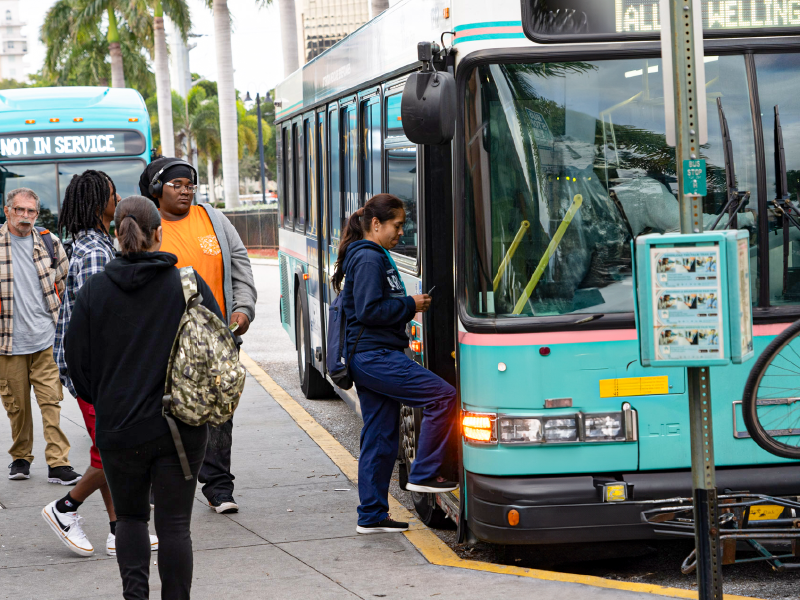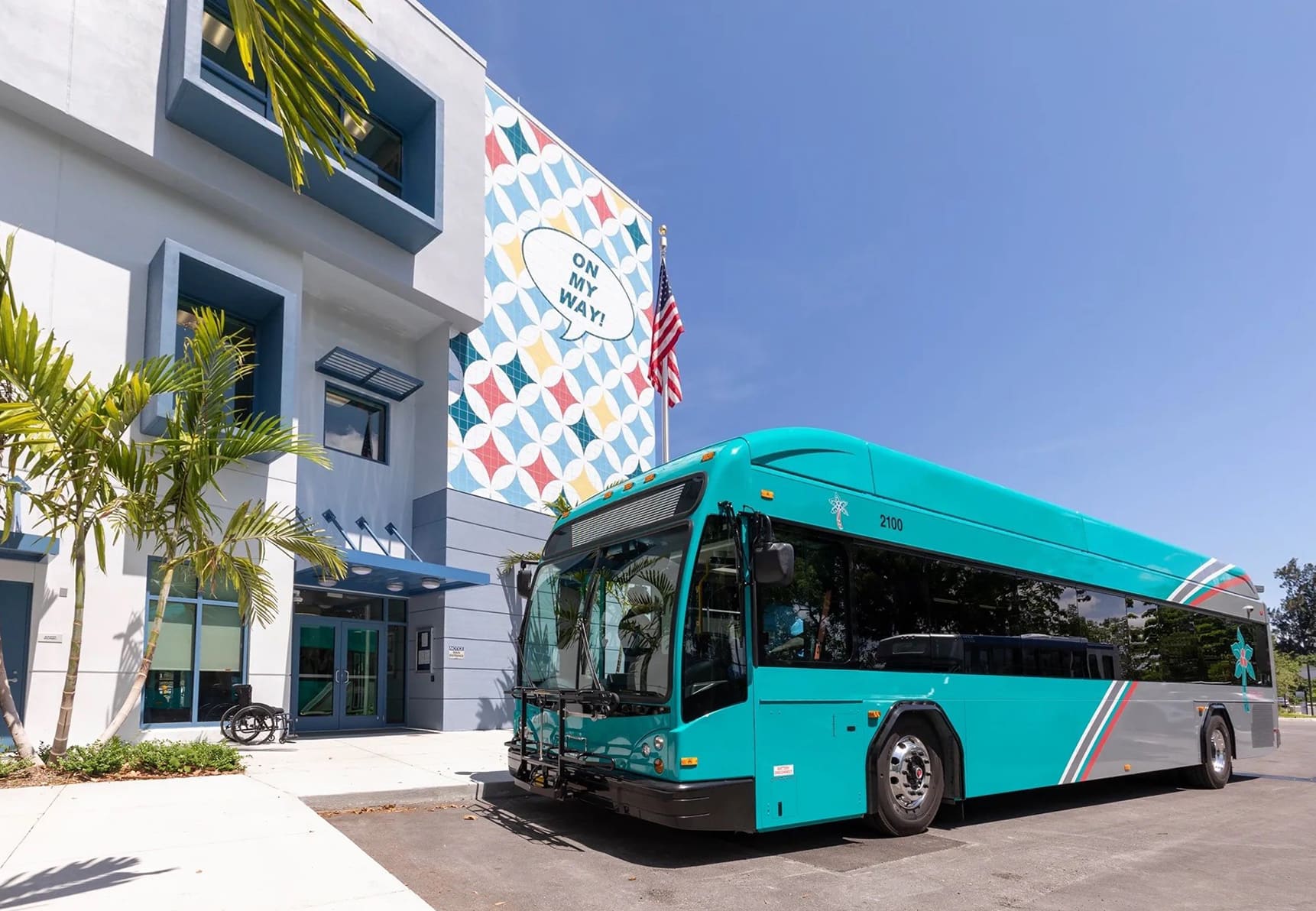
Overview
Stretching along the Atlantic coastline of Florida into the northern tip of the Everglades, Palm Beach County is known for its scenic beach towns and bustling city centers. The popular tourist destination has attracted an influx of transplants from stateside and abroad for years. In 2022, the county welcomed over 13,000 new permanent residents, making transportation options all the more crucial for residents.
The Palm Tran public transportation system is an essential service to the 28,000 daily customers who ride its buses to get to work, school, and leisure activities. The mid-sized transit organization serves one of the largest counties in the southeast U.S. and the third largest county in the state.
Like transit agencies nationwide, Palm Tran was challenged with finding a way to bring back its former riders and attract new ones post-COVID. The agency set an example for other agencies with one of the earliest pandemic recovery strategies. It aimed to increase ridership and revenue by making the customer experience more convenient and equitable as residents began to rebuild their lives after the pandemic and visitors started returning in greater numbers.
Palm Tran wanted to make it a “no-brainer” for riders to choose transit over driving or rideshare, whether they are retirees, white- or blue-collar workers, or tourists. To do this, they partnered with Genfare to execute a technology-forward strategy to optimize the boarding experience, improve schedule reliability, and make riding with them desirable.
This upgrade meant offering payment options that allowed passengers to ride with whatever form of payment was in their pocket. Palm Tran also needed a flexible solution that not only modernized its fare collection system, but also provided the analytics it needed to make smart operating decisions. It was equally critical for the solution they chose to empower its customers with more equitable, socially conscious payment options and trip-planning tools as well.
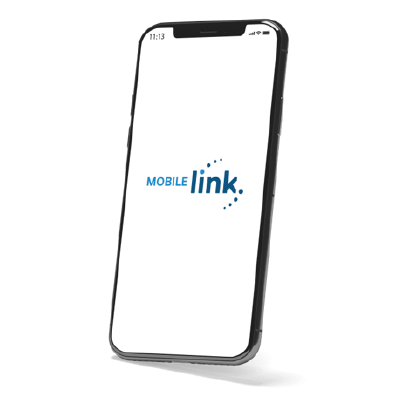
Palm Tran also integrated Genfare’s Mobile Link app, allowing its riders to streamline their transit experience. Riders can now securely buy mobile tickets, manage their account, and plan and receive alerts about their trips in real-time within a single platform. Palm Tran’s goal to modernize its fare collection system with mobile account management was a product-market fit: more than 10% of ticket sales are now made through the Mobile Link app, outperforming smart card payment.
To remain inclusive of all their customer’s financial circumstances, Palm Tran installed more point-of-sale terminals and ticket vending machines along their bus routes and at libraries as another way for them to empower their community. Doing so improves convenience and allows Palm Tran’s unbanked and underbanked riders to benefit from the cost savings and data security that banked riders enjoy as well. Palm Tran’s digital transformation also included Genfare Link, a cloud-based revenue management system that links all phases of the fare collection cycle into a single SaaS platform. Instead of going to multiple systems to fetch information about the cash management cycle and rider data, Palm Tran can now access a single source of truth that streamlines backend operations and improves the customer experience.
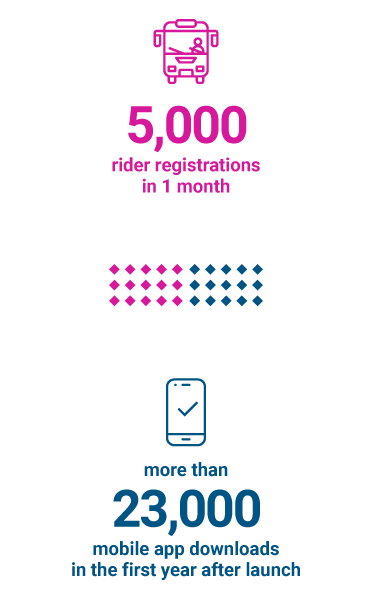
Project Implementation & Process
Although Genfare was familiar with Palm Tran from previous projects, we still needed to dig deeper into the specific needs and goals of its all-in digital strategy. In September 2020, Genfare’s senior program manager Vandana Sudini spearheaded the pre-launch discovery and demo to pinpoint Palm Tran’s exact challenges and how the agency’s internal and external users would interact with the solution. In these workshop sessions, Sudini and her team gathered feedback from relevant Genfare and Palm Tran users to create use cases and test scripts. The insights from discovery and demo were then applied to user acceptance testing in mid-2021, which informed stakeholder training, technical issue resolution, and process refinement.
At the start of November 2021, a 30-day pilot was conducted on five Palm Tran buses to simulate on-the-ground scenarios and full functionality before production. When it was time to go live, Sudini and her team stayed on-site for the next 10 days at terminals, bus stops, and buses to assist riders with their app setup and answer questions. Palm Tran simultaneously prioritized marketing efforts to make information about these benefits and improvements widely available to the riding public.
As Palm Tran and its customers became more comfortable with the changes to its transit experience, the agency transitioned to a more autonomous support model. This included a customer portal that Palm Tran staff could independently access to get their questions answered quickly, even without Genfare support on the ground.
The final result was just as they hoped. “Their campaign went amazing,” Sudini said, bringing 5,000 rider registrations within the month – an unheard-of amount in her time working with transit agencies to launch similar programs.
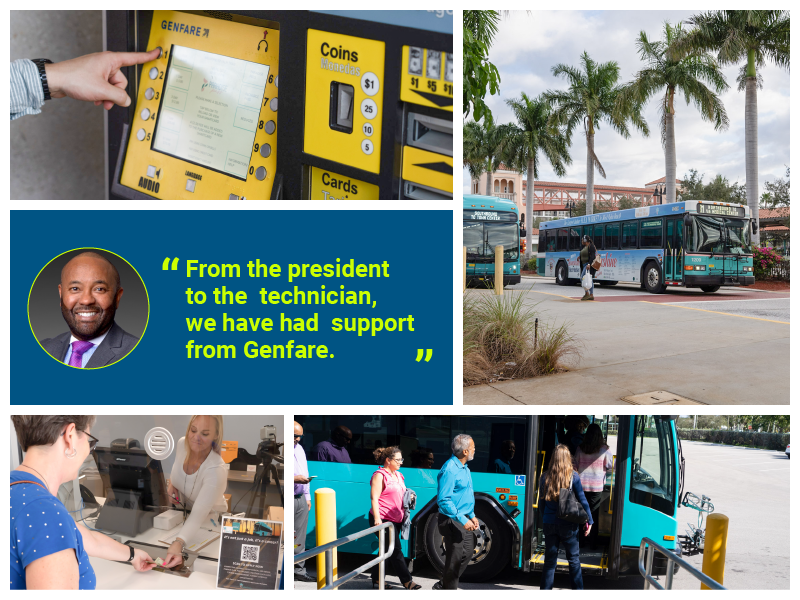
Challenges
Palm Tran aimed to increase ridership and revenue by making the customer experience more convenient and equitable as residents began to rebuild their lives after the pandemic and visitors started returning in greater numbers. Genfare’s partnership with Palm Tran was grounded in solutions-oriented, open communication, a shared value that guided the project through COVID. This approach created an environment that allowed both sides to adapt to unexpected changes and stay on track.
Retrofitting magnetic TRiMs onto the new fareboxes to accommodate cash-paying customers, for example, was an instance in which a solutions mindset helped to deliver out-of-scope elements without delaying the project timeline. Even when service halted as employees isolated and riders worked remotely, Genfare’s responsiveness and support did not.
“[We could] pick up the phone and make a call, and they [had] someone to assist [us] through the entire process. I have to say that Genfare has been there for us,” said Palm Tran Executive Director Clinton Forbes.*
*Clinton B. Forbes, Executive Director of Palm Tran, passed away on November 2, 2023. We will remember the passionate and positive legacy that he left in his community and our industry.
Results
Like many transit agencies, Palm Tran wanted to increase revenue and ridership. However, its initial benchmark for success was more qualitative than quantitative, knowing that the numbers would eventually follow a more positive passenger experience. Forbes himself rode the buses and talked to customers about how they felt about open payment and the Mobile Link app. He was pleased to hear that it was a “no-brainer” – the exact customer feedback he set out to garner from them.
In the year after launch, there were more than 23,000 Mobile Link downloads, which is a testament to the flexibility, usefulness, and relevancy that Forbes knew his customers needed. “Our riders have really been taking advantage of the new fare collection system,” he said. “I’ve just been pleasantly surprised by how conversant they are with the new technology.” The added convenience demonstrates Palm Tran’s commitment to adapting to market needs with advances in technology.
From Palm Tran’s perspective, the project could not have gone better. Forbes noted that Genfare’s top-down, hands-on support at launch and post-implementation was critical to Palm Tran’s success. Forbes called it the “smoothest implementation with the fewest customer calls” he had seen in his career serving public transportation organizations. It has been a “game changer for our organization and our customers.”
Word of Palm Tran’s success in implementing open payment solutions caught wind within the industry. Peer agencies, who were inspired by Palm Tran’s success, called Forbes to learn more about his experience leading the project and partnering with Genfare.
Despite many challenges, the agency’s ability to execute its marketing and rider adoption promotions earned multiple accolades from industry groups and other national organizations.
The Conference of Minority Transportation Officials (COMTO) awarded Palm Tran Public Agency of the Year in 2020 and Forbes Corporate Executive of the Year in 2021 for their commitment to making economic opportunities more accessible through public transit initiatives. They were also honored with the Industry Innovation Award in 2022 for going “above and beyond during what was still a challenging time in our world to advance equity in the transportation industry and our local communities.”
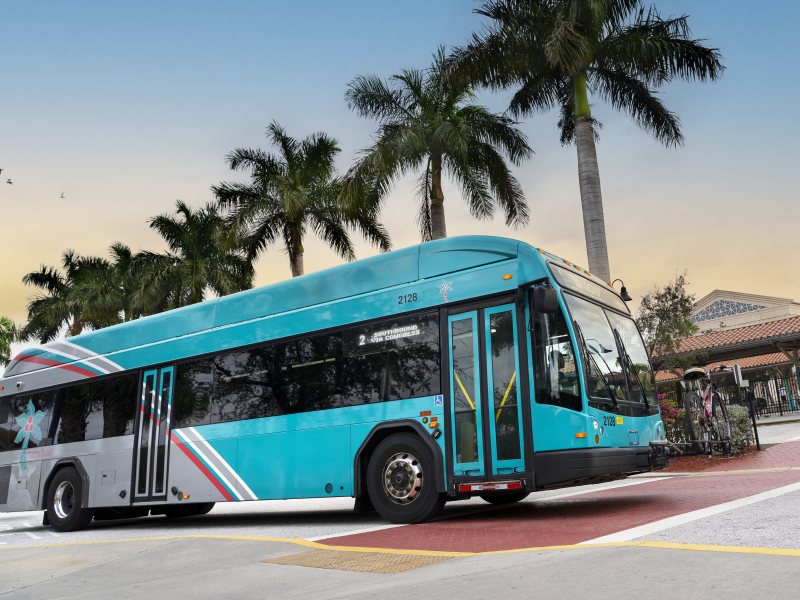
Takeaways
The inspiration for the Genfare fare collection project was simple: make transit access more equitable in support of economic opportunity for the residents of Palm Beach County.
Forbes credited much of the project’s positive outcome to listening to not only customers, but also to vendors and internal teams who worked together to bring to life their vision of connecting communities through more modern and fair transit solutions. Genfare and Palm Tran aligned early on the value of listening to each other, with Forbes citing the collaborative spirit with them as a “major part of [their] success” with the project. In the same way Palm Tran centered their customers’ needs as a measure of their success, Genfare prioritized Palm Tran’s feedback to address their organizational needs and project goals.
Successful implementation of the project was only half the battle; Palm Tran also needed to over-communicate and educate its customers to empower riders to adopt the new system. Forbes advised other agencies who are ready to transform their fare collection system to ask for feedback early and often so that you can get “all of the great information from [customers] on how [you] can improve the system” dynamically. Customers now have the added functionality of open payment on Palm Tran’s Fast Fare fareboxes and the extra convenience of having the Mobile Link app to buy tickets, pay fares, and plan trips – all while the technology collects real-time data that helps the agency enhance the rider experience.
The most valuable currency in public transportation isn’t in your wallet – it’s your time. Forbes understood that diverse riders deserve diverse and relevant solutions for getting around. “I have always said that crisis breeds innovation,” Forbes said. Instituting Genfare’s modular products within its bus system was the right solution at the right time, even during the pandemic. By the time Palm Beach County residents started returning to work and school in person, Palm Tran was ready to serve its riders in ways that adapted to how their lives changed after COVID. Genfare’s configurable Mobile Link app, Genfare Link, and open payment solutions have given Palm Tran the runway to not only address customer needs, but also to prime its agency to see ahead of the curve moving forward.
Journey with Genfare
We want to elevate transit, not just for riders, but also for the agency and the whole community. Learn how Genfare can help your agency increase ridership and raise revenue with our simplified, empowered, and connected equitable mobility solutions.

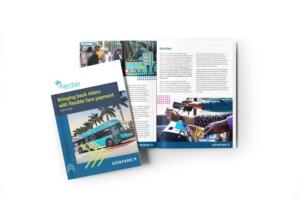 Looking for more details?
Looking for more details?